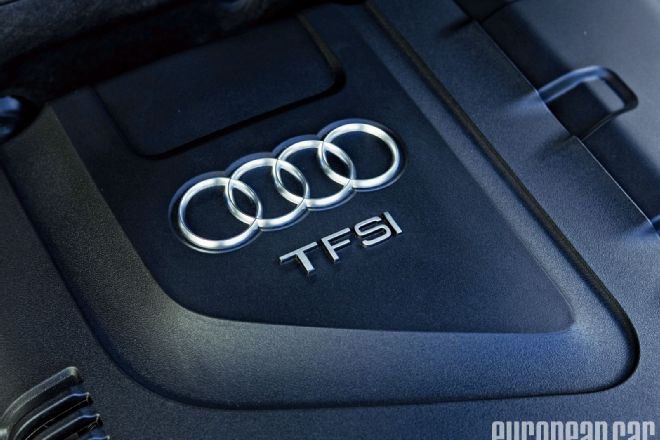Since 1997, modifying the ECU code of a turbocharged A4 has been the quickest and easiest way of coaxing 30 to 40 percent more horsepower and torque. This was instrumental in increasing the A4's enthusiast popularity because its factory-rated 150 hp was pretty pathetic for a midsize sedan in 1997. Still, over the years Audi has employed several different methods to prevent alterations to the ECU. In the past these were easily bypassed, but recent efforts, such as advanced flashing algorithms, checksums, and RSA encryption have made upgrading software difficult.
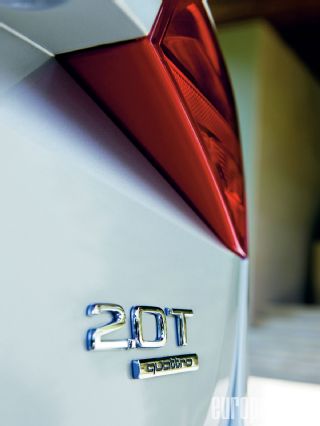 |
2010 Audi A4 2.0 TFSI
|
2010 Audi A4 2.0 TFSI
For more than 17 years, GIAC has been developing tools and equipment that can penetrate the most complex ECU defense systems. With the release of the 2010 A4 2.0 TFSI with Audi's most advance ECU encryption, GIAC's answer was its Stage 1 upgrade with full switching capability.
Vehicle Data
Engine:
2.0-liter I4, dohc, 16-valve, direct injection
Transmission: Six-speed manual, all-wheel drive
Mileage: 4,646
Current modifications: None
Dyno data: Mustang MD-AWD-500 in 4WD Mode
Test octane: 91
Test gear: Fourth
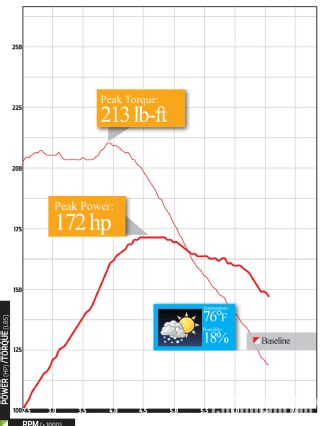 |
|
Baseline
Peak power: 172 hp @ 4425 rpm
Peak torque: 213 lb-ft @ 3925 rpm
*All horsepower and torque figures quoted are at the wheels
Temperature: 76° F
Humidity: 18%
Test Notes
The baseline and GIAC Stage 1 91-octane software tests were performed on the same day utilizing the same tank of 91-octane fuel. All horsepower and torque numbers are quoted at the wheels. It's also important to keep in mind that the Mustang dyno, when properly calibrated, produces very accurate power and torque numbers. While the numbers matter, it is the differences between the runs that help prove or disprove the validity of the manufacturer's claims.
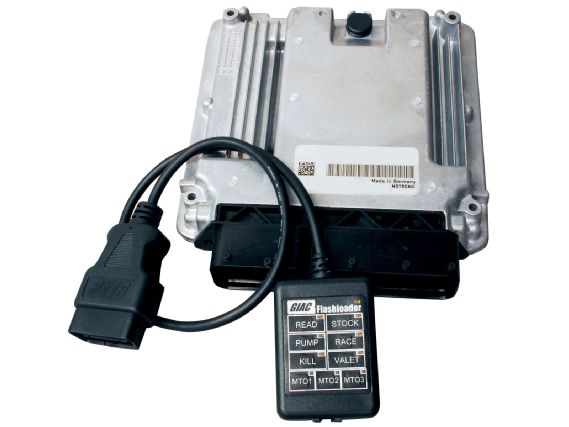 |
Audi A4 2.0 TFSI - Proven
|
Audi A4 2.0 TFSI - Proven
GIAC Stage 1 Software
91 Octane
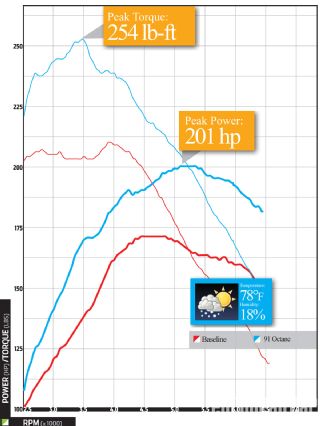 |
|
Test 1
Performance
Peak power: 201 hp @ 5075 rpm
Peak torque: 254 lb-ft @ 3425 rpm
Peak power gain: 36 hp @ 5350 rpm
Peak torque gain: 49 lb-ft @ 3425 rpm
Temperature: 78° F
Humidity: 18%
Parts: OBD Port Flash
Installation time: 45 minutes
MSRP: $550
Pros
• OBD port flashing leaves the ECU and harness completely unmolested
• Increased throttle response and smoother power transitions
• All factory safety protocols remain intact
• Boost, fuel and engine timing calibrations are based on real world conditions and testing
• 100 percent reversible
• Available in both 91 or 93 octane versions at no additional cost
• Speed limiter increase in sixth gear only
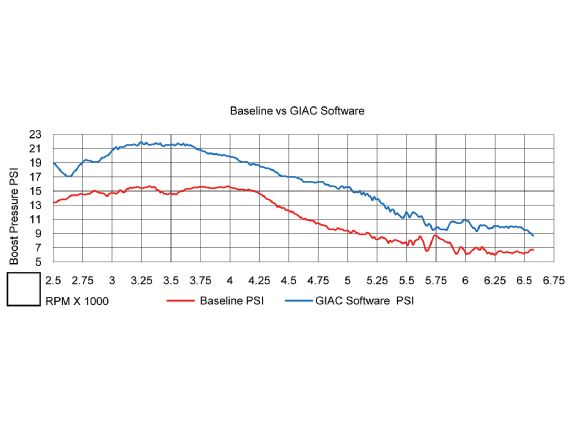 |
The boost data was generated using a boost line attached directly to the intake manifold then attached to an externally mounted 3bar GM style MAP sensor with a 0-5 volt analog output range. The signal is converted by the Powerdyne software into PSI.
|
The boost data was generated using a boost line attached directly to the intake manifold then attached to an externally mounted 3bar GM style MAP sensor with a 0-5 volt analog output range. The signal is converted by the Powerdyne software into PSI.
Cons
• 7000-rpm rev limiter only available as a free option on vehicles equipped with a manual transmission
Test Notes
None
GIAC Stage 1 Software
100 Octane
Test 2
Performance
Peak power: 215 hp @ 5295 rpm
Peak torque: 254 lb-ft @ 3045 rpm
Peak power gain: 14 hp @ 5310 rpm
Peak torque gain: 15 lb-ft @ 4905 rpm
Temperature: 77° F
Humidity:16%
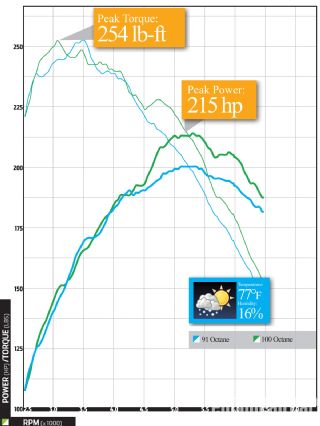 |
|
Installation time: With 100 octane in the tank, 30 seconds with GIAC Flashloader MSRP: $7.99 per gallon (est.)
Pros
• Prevents excess timing retard that can reduce horsepower
• Helps maintain power in extreme temperatures
• CARB Approved Street legal 100 octane designed for street and track use
• Contains no metal compounds that can destroy catalytic converters or oxygen sensors
Cons
• A pricey addiction
Test Notes
The tank was still a third of the way full of 91 octane when we went to start the second test, even after extended test drives, so the 100 octane test was not performed on the same day. To ensure complete accuracy of the 100-octane results, this test was performed the very next day using three gallons of VP100.
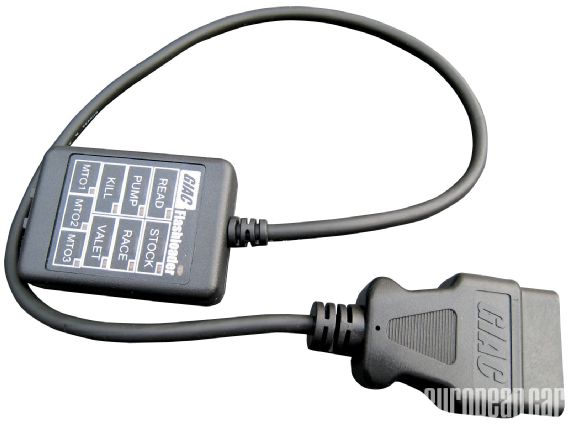 |
Audi A4 2.0 TFSI - Proven
|
Audi A4 2.0 TFSI - Proven
GIAC Flashloader hand-held (Options)
Installation time:
If purchased separately, the upgrade takes approximately one hour
MSRP: Flashloader Handheld $150
Programs: Race $100*, Valet $50*, Stock $50*, Privacy Firewall $100*
*Purchase of GIAC Stage 1 Software
Pros
• Read button indicates current program setting to reduce confusion
• Allows the full benefits of 100 octane fuel
• Valet option to put the vehicle in a significantly detuned state
• Kill option designed to make the car inoperable
• Stock option makes trips to the dealer less stressful
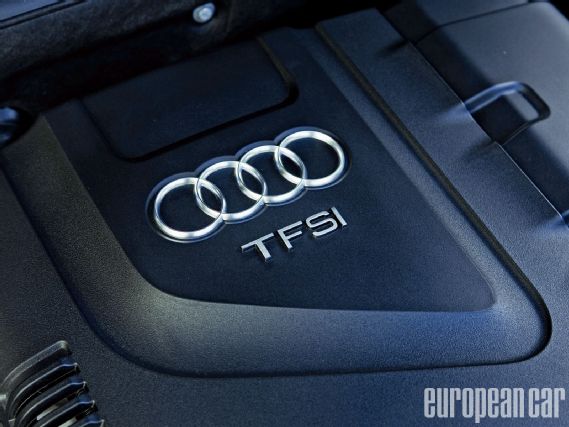 |
Audi A4 2.0 TFSI - Proven
|
Audi A4 2.0 TFSI - Proven
Cons
• Bells and whistles add up to a nice chunk of change
Conclusion
The 2010 Audi A4 2.0 TFSI comes with 211 hp and 258 lb-ft of torque, a nice increase from the 150 hp of the 1997 A4, but it still falls a tad short. The GIAC Stage 1 Software Upgrade eliminates that shortcoming and improves the 2.0 TFSI in both power and drivability.
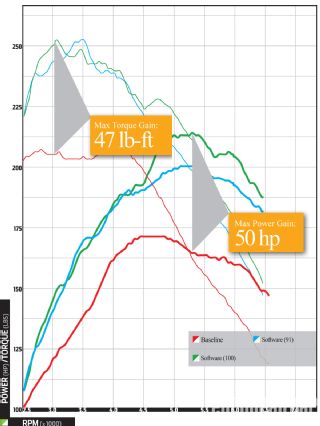 |
|
The difference was instantly noticeable upon accelerating through first gear. Unlike the factory software, where power falls off at 5000 rpm, the GIAC Stage 1 software pulls strong all the way to 6500 rpm. This is especially helpful off the line, and the augmented powerband continues through the remaining five gears. This is especially important because if you have ever driven the A4 Quattro and found yourself in third gear around 2,000 rpm and tried to accelerate, the response is not great and the lack of power is frustrating. The GIAC software allows easy acceleration in almost any situation with the power readily at hand. Initial concerns over whether or not the GIAC chip would damage Audi's two-stage valve lift system were laid to rest. In every gear from tip-in to full throttle, the power delivery is smooth and lag-free. Unlike some tuned turbo cars where the gas pedal positions are over exaggerated, the power delivery based on pedal position is balanced to give the driver full control of the vehicle powerband.
The combination of the GIAC Flashloader Handheld and optional 100-octane performance program makes the perfect solution. The setup allows you to drive the car during the mundane work week, and when you get that itch for more power you simply fill up with a few gallons of 100 octane, push a button, and quickly get an additional 14 horsepower and 15 lb-ft. This is by far the best horsepower per dollar upgrade available.
PARTS COST GIAC STAGE 1 SOFTWARE $550 GIAC FLASHLOADER $150 GIAC RACE PROGRAM OPTION $100 VP100 RACE FUEL $23.97/gallon MSRP TOTAL $823.97
